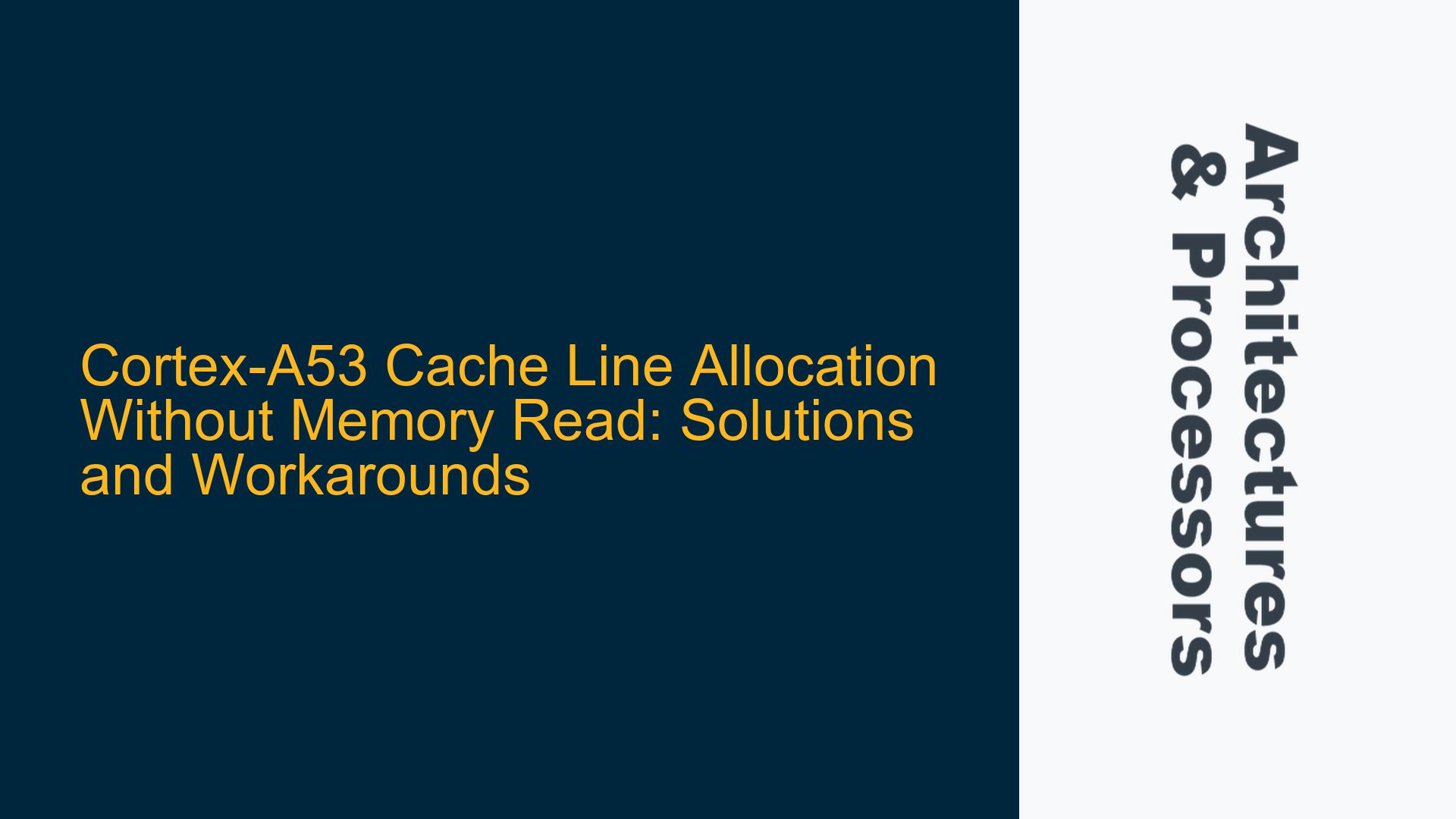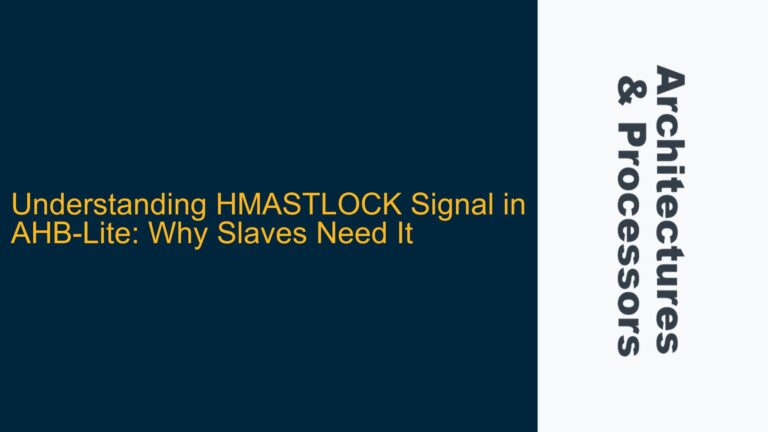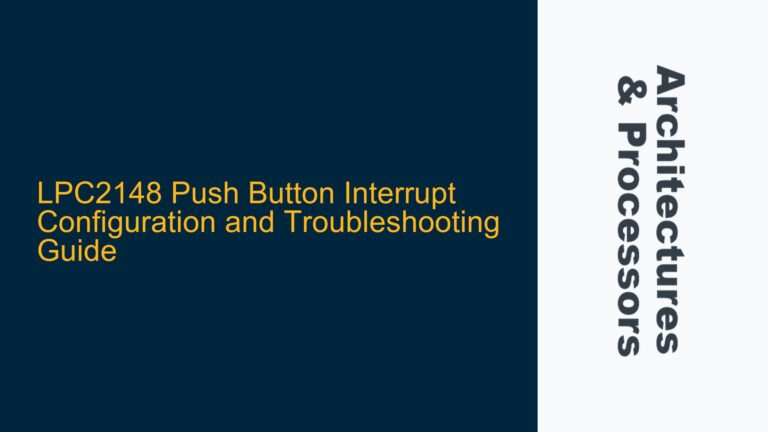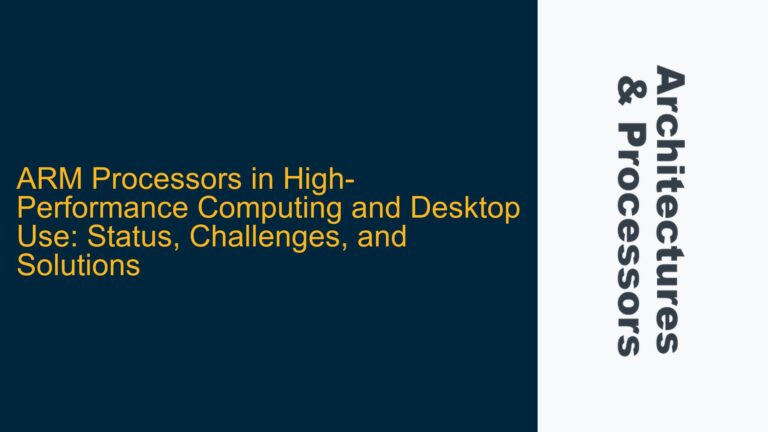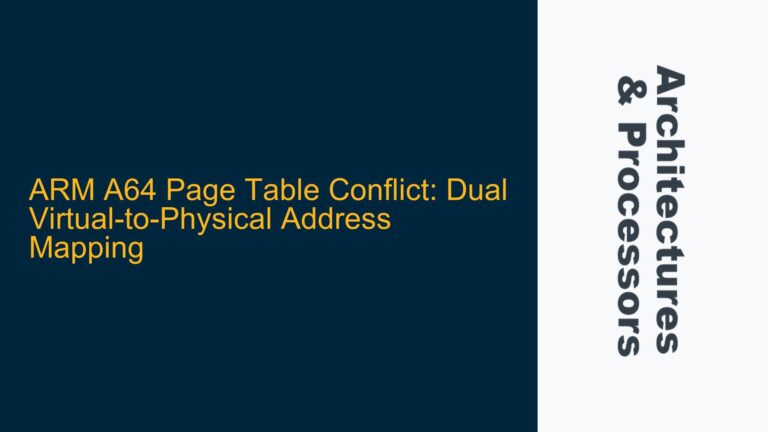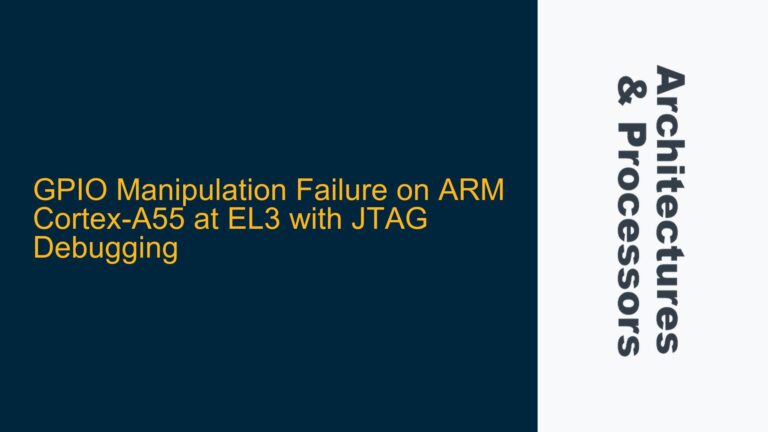Cortex-A53 Cache Line Allocation Behavior and DC ZVA Instruction
The Cortex-A53 processor, a popular choice in embedded systems and mobile devices, implements the ARMv8-A architecture. One of the key features of this architecture is the ability to manage cache lines efficiently, particularly through the use of the Data Cache Zero by Virtual Address (DC ZVA) instruction. This instruction is designed to zero a block of memory without necessarily reading the existing data from memory, which can be beneficial for performance optimization in certain scenarios.
However, the behavior of the DC ZVA instruction on the Cortex-A53 has led to some confusion, particularly when compared to the descriptions provided in the ARMv8-A Programmer’s Guide and the Cortex-A53 Technical Reference Manual (TRM). The Programmer’s Guide suggests that the DC ZVA instruction can act as a prefetch-like operation, where the cache line is allocated and filled with zeros without reading from memory. In contrast, the Cortex-A53 TRM specifies that the DC ZVA instruction, when it misses in the cache, will clear the main memory directly without allocating a cache line in the L1 or L2 caches.
This discrepancy raises an important question: Is it possible to allocate a cache line in the Cortex-A53 without triggering a read from memory, and if so, how can this be achieved? The answer lies in understanding the nuances of the ARMv8-A architecture, the specific implementation choices made in the Cortex-A53, and the available workarounds for achieving the desired behavior.
Memory Attributes, Cache Policies, and DC ZVA Implementation
The behavior of the DC ZVA instruction on the Cortex-A53 is influenced by several factors, including the memory attributes associated with the target address and the cache policies implemented by the processor. The ARMv8-A architecture provides flexibility in how cache operations are handled, allowing different implementations to optimize for specific use cases.
In the case of the Cortex-A53, the DC ZVA instruction is designed to prioritize direct memory access over cache allocation when a cache miss occurs. This design choice is likely motivated by the need to minimize latency in certain scenarios, particularly in embedded systems where memory bandwidth and power consumption are critical considerations. However, this behavior can be problematic for applications that require cache line allocation without memory reads, such as real-time systems or applications with strict timing requirements.
The memory attributes associated with the target address play a crucial role in determining how the DC ZVA instruction behaves. For example, if the memory region is marked as non-cacheable, the DC ZVA instruction will bypass the cache entirely and directly zero the memory. On the other hand, if the memory region is marked as cacheable, the behavior of the DC ZVA instruction will depend on the specific implementation of the Cortex-A53, as described in the TRM.
To achieve cache line allocation without reading from memory, it is necessary to manipulate the memory attributes and cache policies in a way that aligns with the desired behavior. This can be done through a combination of memory attribute configuration, cache maintenance operations, and careful use of the DC ZVA instruction.
Implementing Cache Line Allocation Without Memory Reads on Cortex-A53
Achieving cache line allocation without triggering a memory read on the Cortex-A53 requires a combination of techniques, including careful configuration of memory attributes, use of cache maintenance operations, and potentially alternative instructions or sequences of instructions.
Memory Attribute Configuration
The first step in achieving the desired behavior is to configure the memory attributes of the target region appropriately. This involves setting the memory type and cacheability attributes in the Memory Management Unit (MMU) page tables. For example, marking the memory region as cacheable and write-back (WB) will ensure that cache operations are performed as expected.
However, simply marking the memory region as cacheable is not sufficient to guarantee that the DC ZVA instruction will allocate a cache line without reading from memory. To achieve this, it may be necessary to use additional cache maintenance operations to pre-allocate the cache line before executing the DC ZVA instruction.
Cache Maintenance Operations
Cache maintenance operations can be used to pre-allocate cache lines in the L1 or L2 caches without triggering a memory read. One approach is to use the Data Cache Clean by Virtual Address (DC CVAC) instruction to clean the cache line, followed by the Data Cache Invalidate by Virtual Address (DC IVAC) instruction to invalidate the cache line. This sequence ensures that the cache line is allocated in the cache without reading from memory.
Once the cache line is allocated, the DC ZVA instruction can be used to zero the cache line without triggering a memory read. This approach effectively achieves the desired behavior of cache line allocation without memory reads, albeit through a more complex sequence of operations.
Alternative Instructions and Sequences
In some cases, it may be necessary to use alternative instructions or sequences of instructions to achieve the desired behavior. For example, the Prefetch for Write (PRFM PLDL1KEEP) instruction can be used to pre-allocate a cache line in the L1 cache without reading from memory. This instruction acts as a hint to the processor that the cache line will be written to in the near future, allowing the processor to allocate the cache line without performing a memory read.
Once the cache line is pre-allocated, the DC ZVA instruction can be used to zero the cache line. This approach is particularly useful in scenarios where the memory region is marked as cacheable and the cache line is not already present in the cache.
Example Implementation
The following example demonstrates how to achieve cache line allocation without memory reads on the Cortex-A53 using a combination of cache maintenance operations and the DC ZVA instruction:
// Assume X0 contains the virtual address of the target memory region
// Step 1: Pre-allocate the cache line using DC CVAC and DC IVAC
DC CVAC, X0 // Clean the cache line
DC IVAC, X0 // Invalidate the cache line
// Step 2: Zero the cache line using DC ZVA
DC ZVA, X0 // Zero the cache line
In this example, the DC CVAC instruction is used to clean the cache line, ensuring that any dirty data is written back to memory. The DC IVAC instruction is then used to invalidate the cache line, ensuring that the cache line is allocated without reading from memory. Finally, the DC ZVA instruction is used to zero the cache line.
Performance Considerations
While the above approach achieves the desired behavior of cache line allocation without memory reads, it is important to consider the performance implications of using additional cache maintenance operations. Each cache maintenance operation incurs a performance overhead, which can impact the overall performance of the system.
To mitigate this overhead, it is important to carefully analyze the specific requirements of the application and optimize the sequence of operations accordingly. For example, in some cases, it may be possible to pre-allocate multiple cache lines in a single sequence of operations, reducing the overall overhead.
Conclusion
The Cortex-A53 processor’s implementation of the DC ZVA instruction presents a unique challenge for applications that require cache line allocation without memory reads. By carefully configuring memory attributes, using cache maintenance operations, and potentially alternative instructions, it is possible to achieve the desired behavior. However, this requires a deep understanding of the ARMv8-A architecture, the specific implementation choices made in the Cortex-A53, and the performance implications of the chosen approach.
In summary, while the Cortex-A53’s behavior with the DC ZVA instruction may not align with the expectations set by the ARMv8-A Programmer’s Guide, there are viable workarounds available. By leveraging the techniques described in this guide, developers can achieve cache line allocation without memory reads, enabling optimized performance in their embedded systems and applications.
